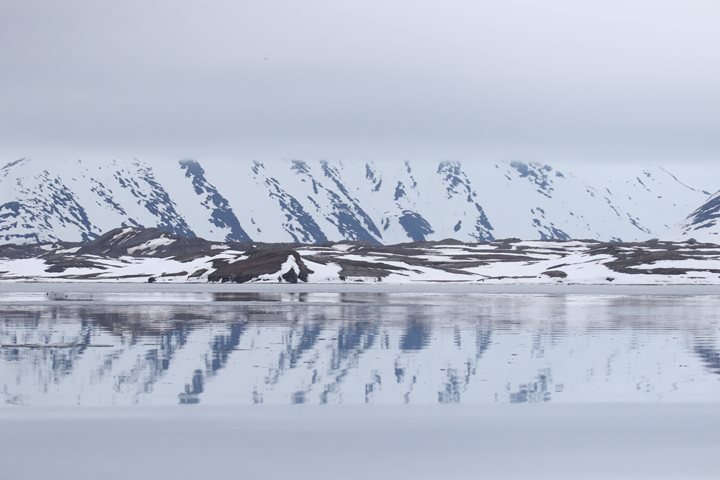After crossing the Arctic Circle and celebrating under the midnight sun, National Geographic Explorer was on a course through the “night” to an island near the tip of the Lofoten Archipelago. This finger of rugged islands sticks out from the mainland of Norway into the Norwegian Sea. Our destination was Vaeroy, a very picturesque treeless island not connected to any of the other islands in the archipelago.
At breakfast the ship anchored in a quiet bay with towering grassy high hills surrounding the calm bay. A cluster of modern looking summer homes dotted one shore of the bay. Rows of rock fences could be seen running perpendicular to the shoreline. These were some of the only remaining remnants of the old village of Marstad. For those wanting to set foot on the island shuttles ashore headed off soon after breakfast. One group walked part of the old wagon trail leading from the village above the shore and around the island to the newer modern village. Another group spent time in the area of the village concentrating on photographing the scenery and the spectacular cloudless morning. Others soon boarded Zodiacs for a cruise along the shoreline searching for seabirds and any other marine life. Later in the morning those that had gone ashore also had an opportunity to cruise in the Zodiacs.
During lunch we transited northward along the eastern side of the islands to a small village called Reine. Arriving in the outer harbor the ship docked and we were able to disembark for leisurely walks into the small village. But the most attractive and photographic scene was the multitude of drying racks for the year’s catch of cod. The Lofoten Islands are well known for their catch of cod and producing salted dried cod for various locations around the world. Scattered across the solid shoreline rock outcrops were racks and racks of split cod almost finished drying and ready to be further processed for export.
Then returning to the ship in the late afternoon we again continued northward toward the northern most islands and fjords of the Lofotens. As we finished yet another wonderful meal, the ship slowed before it turned to enter one of the most famous fjords in Norway. Although Trollfjord is not very long it is extremely dramatic for the sheer rock walls on both sides and the narrowness of the channel. The captain deftly took the ship into the fjord, turned it to approach a small waterfall closely. From the bow of the ship, Anja, the assistant expedition leader was then able to pluck a small leaf of a rowan tree. This was a tradition for this Norwegian fjord, possibly in honor of the trolls that hide amongst the boulders and cliffs overlooking the coastline.






